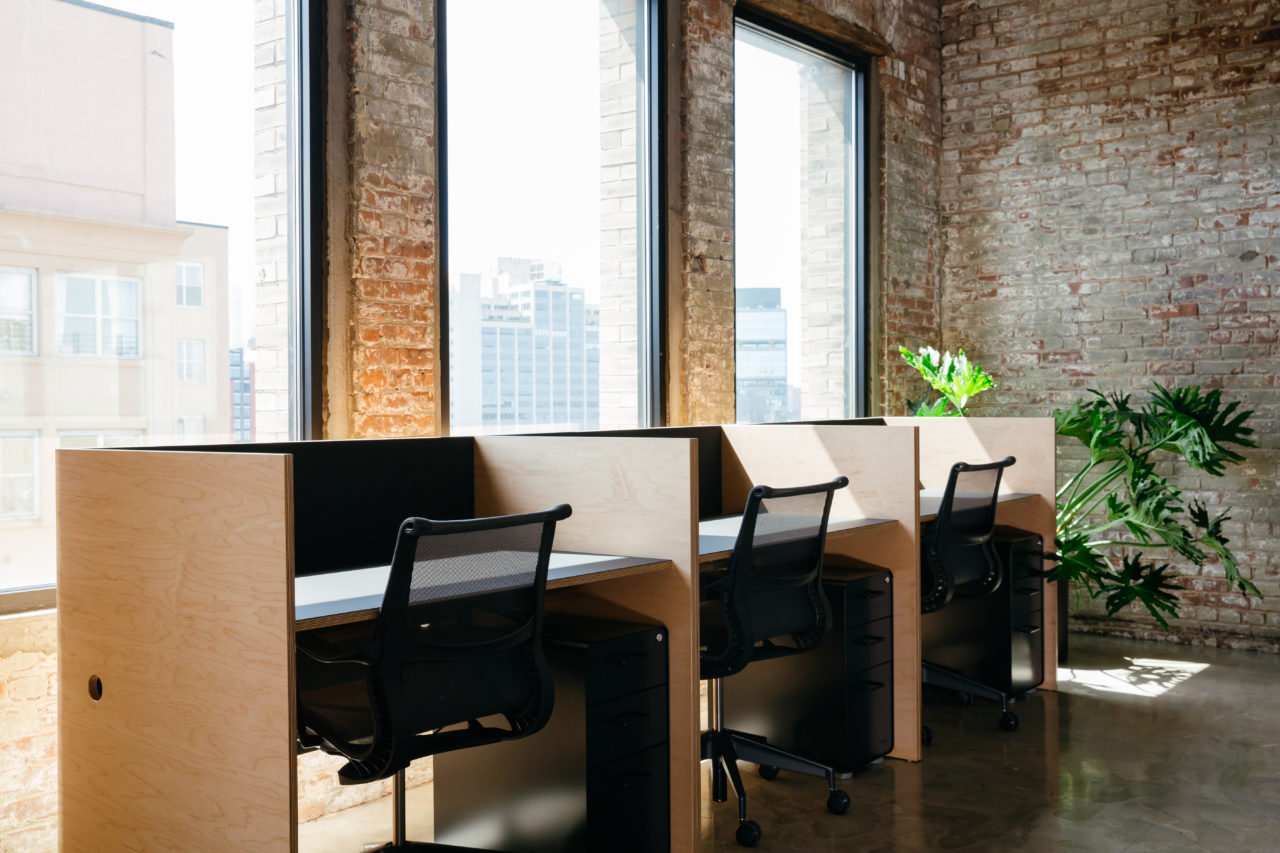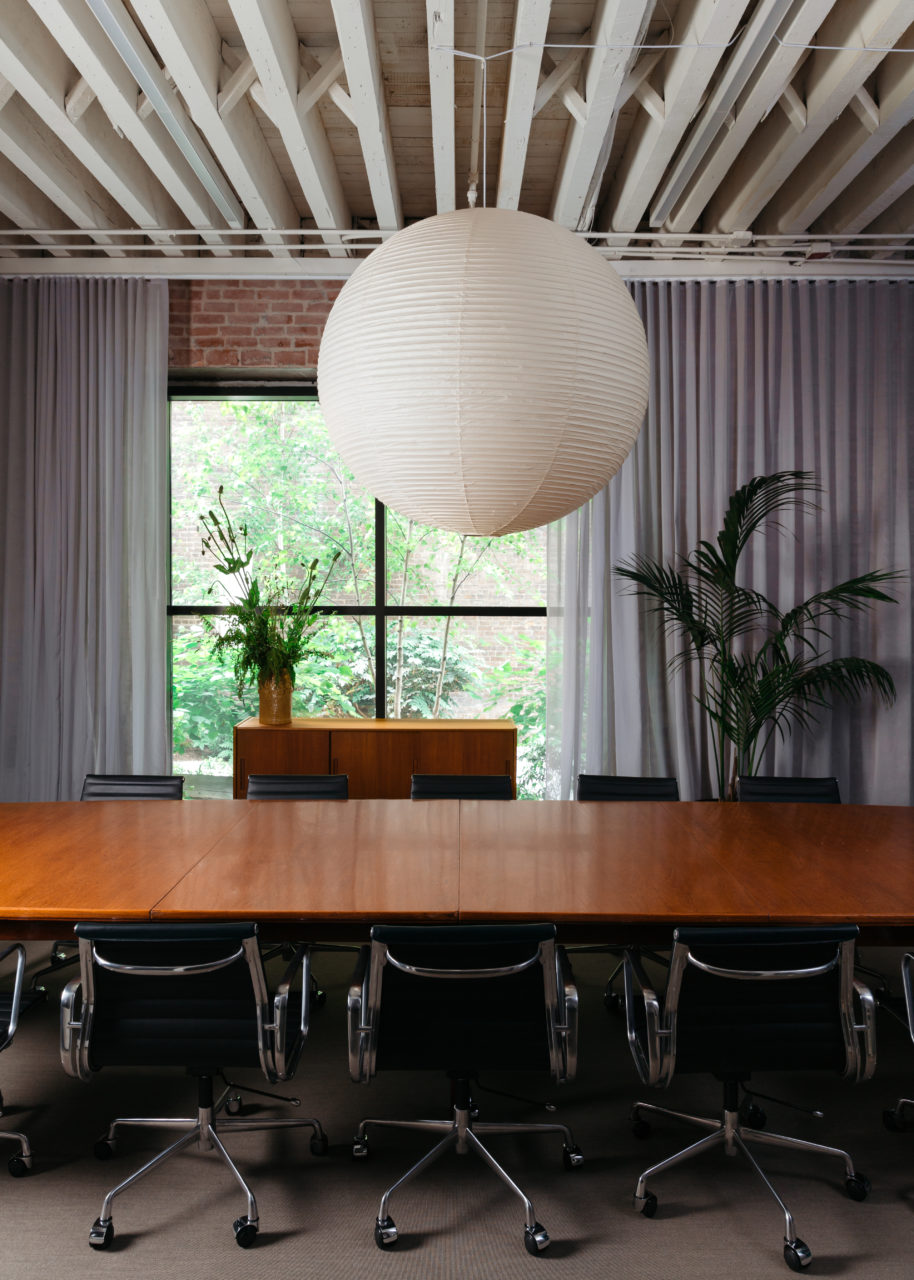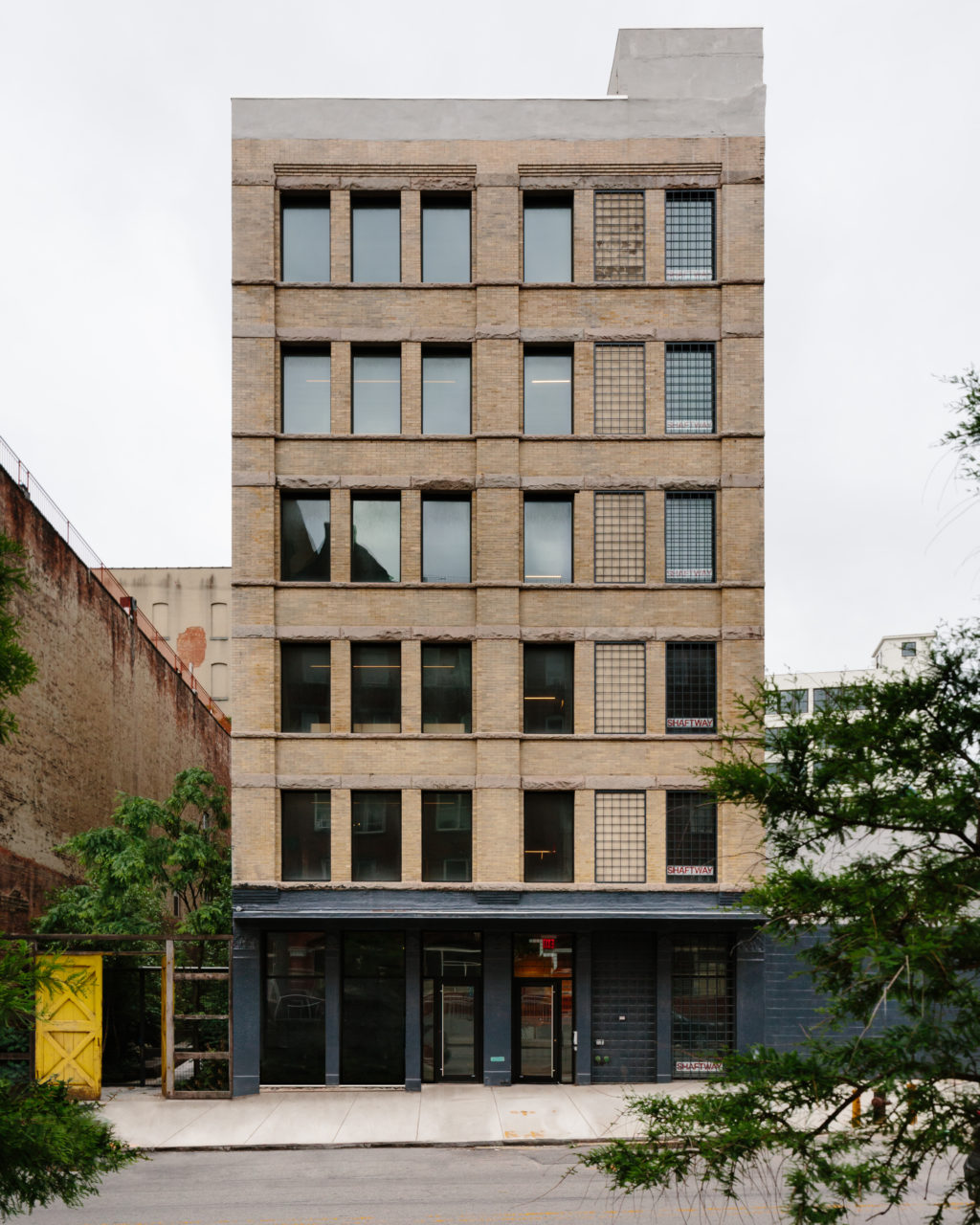No technology startup ever met a disused factory or weathered warehouse it didn’t like, least of all Newlab. Back in 2016, the tech hub set up shop in Building 128 of the Brooklyn Navy Yard, with digs designed by local studio CIVILIAN. In the intervening years, Newlab’s workforce began to outgrow the airy 84,000-square-foot facility, whose turn-of-the-century structure could accommodate an entire warship, and so the company looked to establish an annex nearby.
Seeking to recapture the collaborative, welcoming atmosphere of its primary campus, Newlab once again sought out the talents of CIVILIAN. Located just a stone’s throw from Building 128, this second property came with a similar brief to outfit an erstwhile manufacturing locale—albeit, on a much smaller scale.




Encased in a charming brick envelope and replete with cast-iron details inside, 77 Washington offers the Newlab coterie an additional 22,000 square feet of space stretched out over the ground-floor lobby and storefront and five floors of offices. The latter are equipped with individual workspaces, meeting rooms, breakout spaces, and amenities, including a wellness room and kitchen.
And just as at Building 128, CIVILIAN principal Nicko Elliott designed the furnishings of the new annex. His team collaborated with Queens fabrication shop Tietz Baccon on the workstations and conference room tables, all made using high-quality, CNC-machined plywood. “The design works as a system, to increase the architectural quality of a space, but it also can stand alone,” explained Elliott. “It has the flexibility to allow different configurations and creates architectural arrangements.”
Meanwhile, in the lobby, Tietz Baccon and Elliott also collaborated on what is arguably the project’s centerpiece, a custom reception desk that manages to channel both 1980s Italian laminate furniture and 1930s industrial machinery. Stationed in front of original wooden millwork, the piece’s linoleum tabletop and stained MDF plywood screen rest atop burly painted steel tubes.

The ground floor (whose rear opens onto a lovely little courtyard with plantings by Michael van Valkenburgh Associates) is elsewhere punctuated with vintage furniture Elliott acquired from an Art Deco vendor based in Connecticut. “What we were drawn to is the 1930s, an era of small local factories making furniture through craft tradition, colliding with the emergence of modernism,” recalled Elliott. An unattributed Banana Sofa, Wingback chairs, and a set of open arm club chairs restored with fabric from Kvadraft’s Raf Simons collection help set the mood.
It’s not all a period piece, however; Elliott also sourced originals by (and close copies of) Noguchi and Donald Judd. These, he explained, are precisely staged alongside MCM Danish pieces, giving the space a certain eclectic charm: “American craft heritage is mixed Danish and Art Deco and Japanese craft in a building that is beautiful with amazing details and iron columns.”
Prior to CIVILIAN’s overhaul, Worrell Yeung underwent a two-year adaptive reuse process with the building’s owner to transform the former factory into a commercial space on both the interior and exterior before New Lab moved in and collaborated closely with landscape architect Michael Van Valkenburgh on the garden.
Header image: A custom reception emulates Italian laminate furniture and the machine age, reinforcing the contemporary yet 30s aesthetic seen in the design of each of the building’s six floors. (Brian W Ferry)
